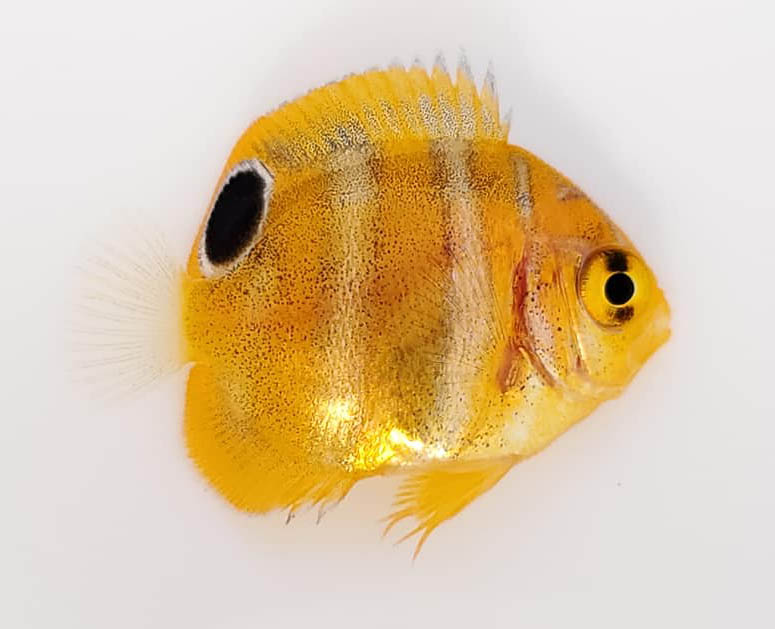
Wen-Ping Su’s marine ornamental fish farm, Bali Aquarich, strikes again in the captive-breeding of one of the most challenging marine angelfishes in the aquarium hobby.
The Regal Angelfish, Pygoplites diacanthus, represents one of the iconic saltwater fishes whose beauty is often overshadowed by a reputation is being a difficult-to-keep species. Given the advances that have been made in captive breeding of marine angelfishes (family Pomacanthidae), the Regal Angelfish was a prime candidate for captive-breeding research. While not the most expensive angelfish in the aquarium trade, captive-breeding could fundamentally redefine the captive husbandry of this species; effectively breeding out the difficulty and taming a wild yet fickle beast.
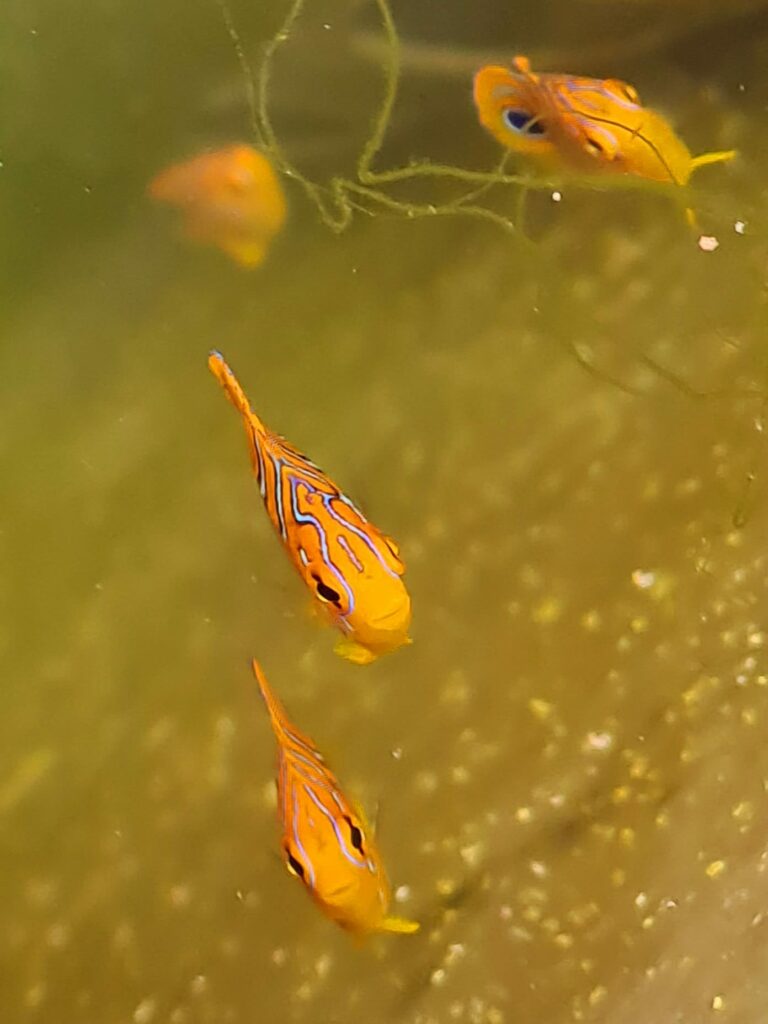
To start off 2022, Bali Aquarich announced the successful production of second-generation captive-bred Regal Angelfish—the F2 generation—the progeny of the first, F1, captive-bred Regal Angelfish [which were first shared with the world in May 2019]. In some circles, it is only this point at which breeding is truly considered a success because the breeder has “closed the life cycle” within the confines of an aquarium system.
To paraphrase a heavily translated text of the announcement: “Regal Angelfish “F2”! This is a very difficult fish. They often refuse to eat in captivity because their natural diet is quite particular, and the survival rate of wild-caught fish in the aquarium is quite low.
“It’s one thing to keep Regal Angelfish in captivity, and yet another thing to raise them to the point where they reproduce. There was no background information to reference.
“A few years ago, we were able to successfully breed the Regal Angelfish for the first time. However, the frequency and quantity of spawns were quite poor, and ultimately this was a difficult fish to breed from beginning to end.
“Now, all the problems have been solved [by using our first generation of captive-bred Regal Angelfish as broodstock]! I hope this fish, which is very beautiful from small to large, can soon appear in aquariums everywhere. Now, the fish that live in the sea, we can let them stay in the sea.”
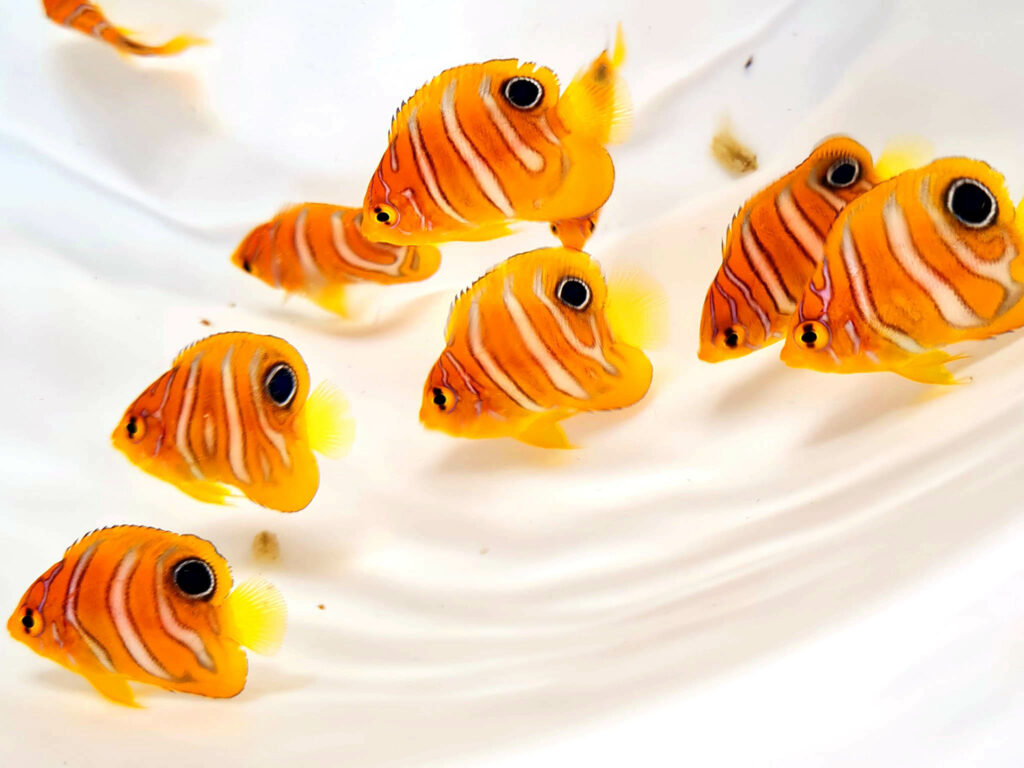
What does this mean for you, the home aquarist? It means that, within the next couple of years, captive-bred Regal Angelfish could very well become rather accessible and somewhat affordable. One only needs to look at the ongoing production of the Majestic Angelfish, Pomacanthus navarchus, to know that Bali Aquarich is entirely capable of producing the Regal Angelfish in quantity.
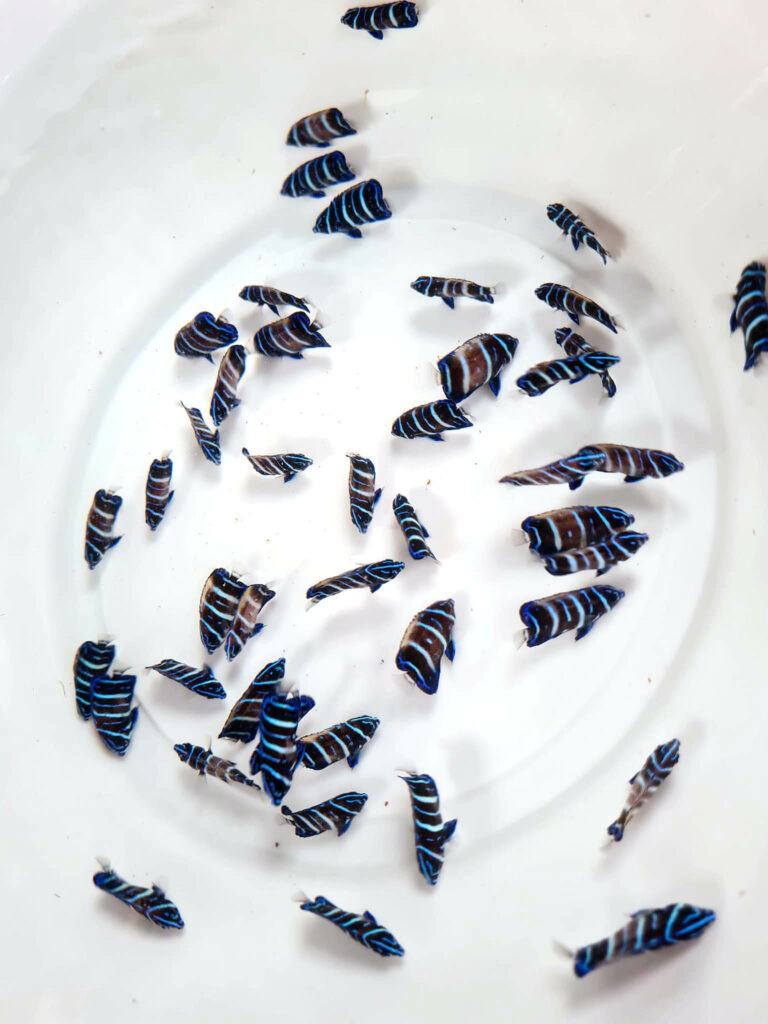
If there is any premium to the cost of a captive-bred Regal Angelfish, one only needs to realize that a captive-bred Regal Angelfish will be a fish that is entirely comfortable in an aquarium, and will likely consume prepared foods with gusto. There is no reason such a fish won’t live for decades with basic, proper care. No one will ever write the same sentiments about a wild-caught Regal. If you’re considering the purchase of a Regal Angelfish, perhaps consider waiting until the captive-bred options hit the market. They may cost more upfront, but you can be certain that the captive-bred counterpart will be a far less risky investment.
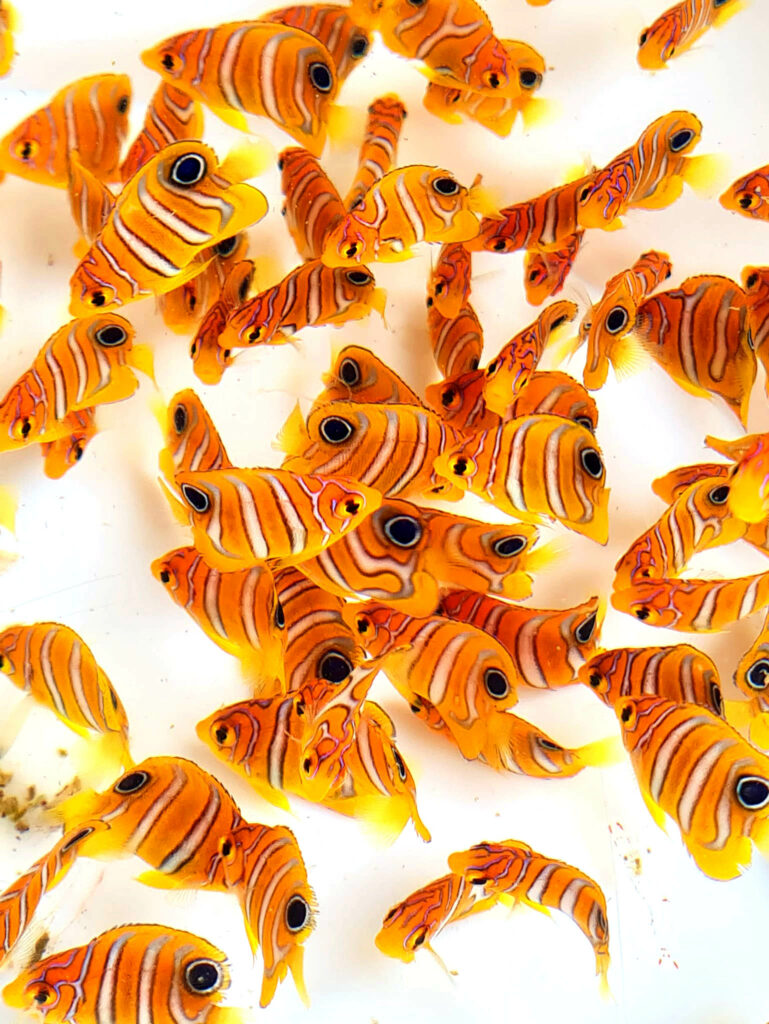
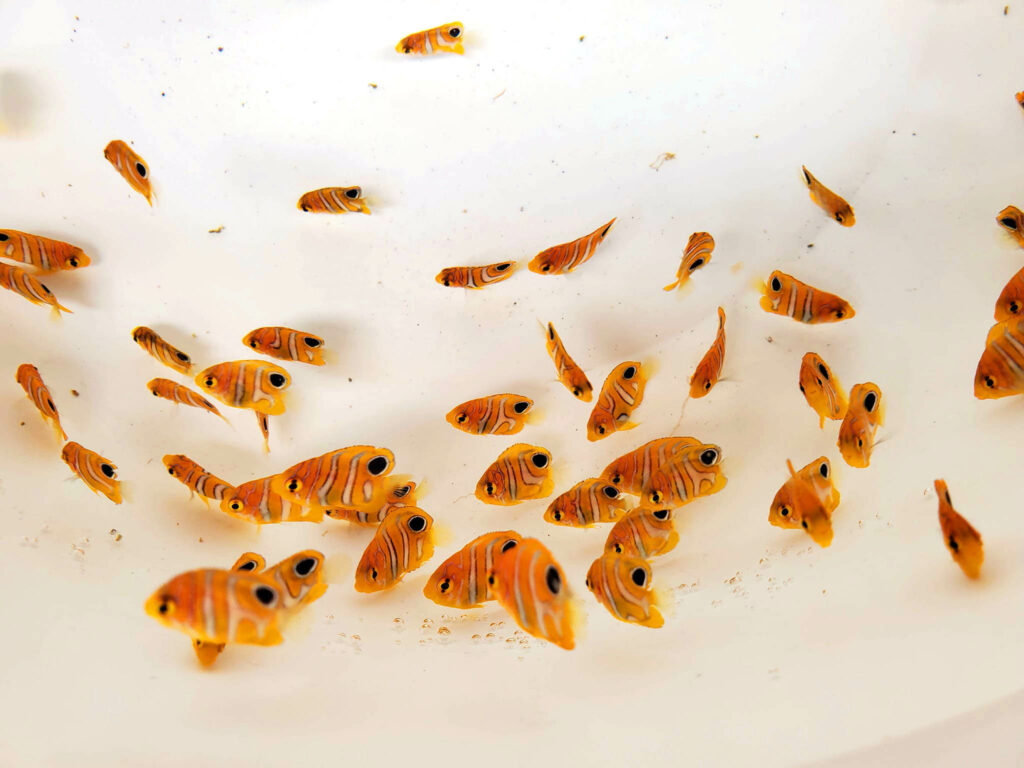


Where are the parent fish of the F1 regal angelfish brood stock originally from?
Thank you
Shelley, there are two ways to answer that question regarding the F0 parents of the F1 generation.
1. My understanding is that these are the Indonesian form of the Regal Angelfish. As such, they’ll mature with gray chests, as opposed to the yellow-breasted form that’s most often collected and exported from the Red Sea.
2. From the wild. Every captive-breeding project originally requires wild broodstock at some point (and some actually require them in an ongoing fashion, sometimes for genetic reasons, or sometimes for reasons that still aren’t clear).
Matt, Indonesia has actually all three regal angel forms: the Indian Ocean form, Pygoplites diacanthus flavescens, on the northwest of Sumatra, the Pacific form, P. d. diacanthus, nearly everywhere else, and the hybrid form in the south end of Sumatra.
Indeed, after further discussions, it looks like the F1s did indeed trace back to F0 fish from Sumatra, which would change the possible result in the offspring to be more yellow-chested/Indian Ocean form (Sumatra being part of Indonesia, and some other aspects of the conversations, pile on the language barrier…) Still not 100% clear on whether that would ring true into the F2 generation; I probably have more questions/clarifications to ask, although if properly framed as F2, that suggests no outcrossing, and the use of the F1 stock, so then in fact Thomas would be correct and these would have yellow chests if that’s all true.
Su said these are the India Ocean form. So, I suspect the wild grandparents of these came from Sumatra. Sumatra regal angels are exported via Bali, so they would be readily available to Bali Aquarich.
Thomas, I’m not sure how to interpret all that. As I first reported a few years back, “Su privately noted that parents of these amazing babies represent the local Indonesian form of the species.”
https://www.reef2rainforest.com/2019/05/31/bali-aquarich-persistence-pays-off-regal-angelfish-bred/
The paper you are referring to is at https://www.sciencedirect.com/science/article/abs/pii/S1055790316300392
Of course, Sumatra is part of Indonesia, and if Su was able to provide a more concise origination point, all the better.
I looked back, and the most recent images of adult Regals among Su’s photos show the gray chested form. E.g. https://www.facebook.com/photo/?fbid=4628280510519778&set=pb.100000136252407.-2207520000..
There is also this one, which appears smaller but also appears to have a yellow chest. Immature, still graying up? https://www.facebook.com/photo/?fbid=4628280403853122&set=pb.100000136252407.-2207520000..
So for now, I stand by my understanding that these should grow up to be P. d. d., or possibly mixed given that they could originate from an area where the mixing of forms would logically occur.
HI WHEN will these for sale and where to buy
It would seem that they are readily available in the UK at a 50%price increase as ii have just priced them up and was given the choice of wild caught or tank bred.
It’ll be interesting to see if any marine fish wind up being truly domesticated. Domestication is a process that happens over hundreds of generations, fundamentally altering the original wild animal into something more suited for life with humans. Like goldfish. Fancy clownfish are headed in that direction, but the changes so far seem to be pretty much be superficial. If these angelfish are kept in captivity for enough generations, being selected each time for ease of care, that could very well end up eventually resulting in a domesticated species.